Welcome to 2024, where the future is green and sustainability is not just a buzzword but a way of life. It’s time to embrace eco-friendly living and make a positive impact on our planet. In this blog post, we’ll explore the various aspects of adopting an eco-friendly lifestyle in 2024 and discover practical tips for […]
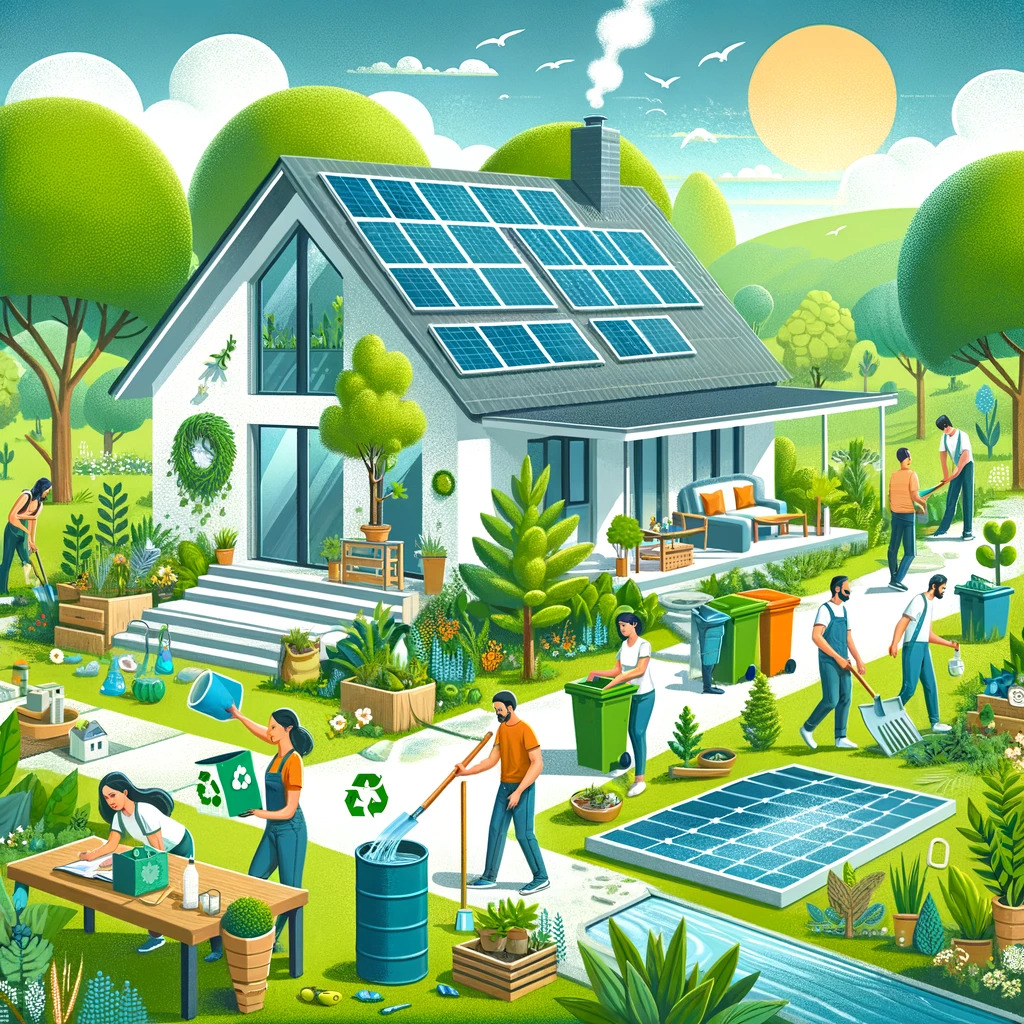
Welcome to 2024, where the future is green and sustainability is not just a buzzword but a way of life. It’s time to embrace eco-friendly living and make a positive impact on our planet. In this blog post, we’ll explore the various aspects of adopting an eco-friendly lifestyle in 2024 and discover practical tips for incorporating sustainable practices into our everyday lives. From eco-conscious home solutions to green transportation options, and sustainable diets to ethical fashion choices, we’ve got you covered! So let’s dive in and discover how we can all contribute towards creating a greener future together. Get ready to transform your lifestyle and become an environmental superhero!
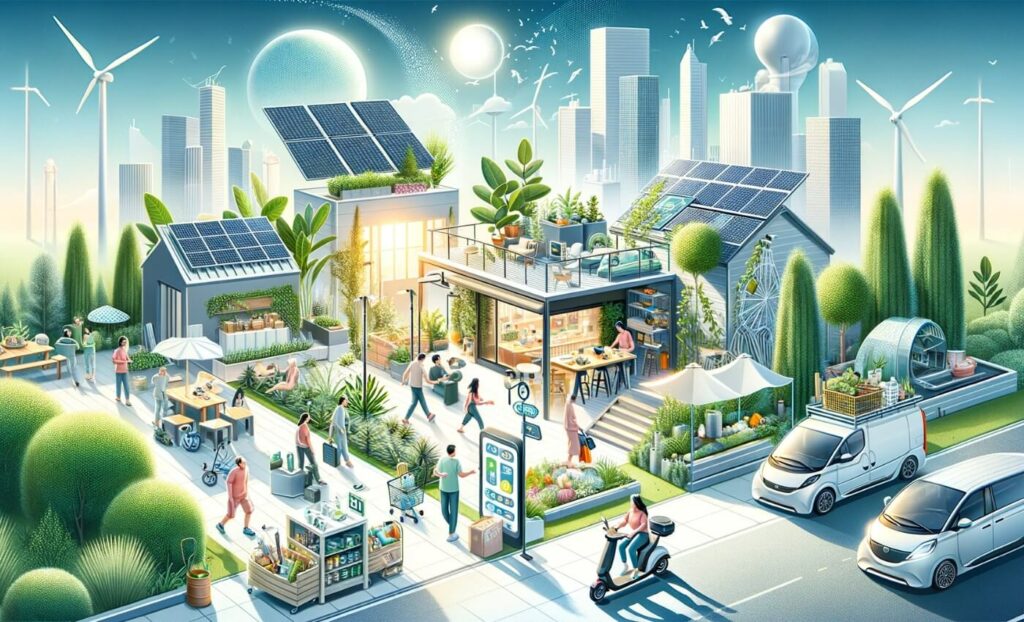
In 2024, eco-friendly living has become more than just a trend; it’s a necessity. People are increasingly aware of the impact their actions have on the environment and are actively seeking ways to reduce their carbon footprint. Understanding eco-friendly living means recognizing that our choices and behaviors can either contribute to or alleviate environmental issues.
One key aspect of eco-friendly living in 2024 is conservation. This involves conserving resources such as water, energy, and natural materials through mindful consumption habits. Whether it’s taking shorter showers, using energy-efficient appliances, or opting for products made from recycled materials, every small action adds up to make a big difference.
Another vital component of eco-friendly living is waste reduction. In 2024, people have embraced the concept of “zero waste” by minimizing single-use items and adopting reusable alternatives like cloth bags, stainless steel water bottles, and bamboo utensils. Recycling has also become more efficient with advanced sorting technologies ensuring that recyclable materials are diverted from landfills.
Sustainable sourcing is another crucial aspect of environmentally conscious living in 2024. From food to fashion, people prioritize products that are ethically produced and sourced without harming ecosystems or exploiting laborers. They support local farmers’ markets for fresh produce grown sustainably without harmful chemicals while also embracing fair-trade practices when purchasing clothing or consumer goods.
Education plays a significant role in understanding eco-friendly living in 2024. People seek out information about sustainable practices and stay updated on new advancements in green technology and solutions. They participate in workshops and webinars focused on environmental topics while engaging with online communities passionate about sustainability.
Understanding eco-friendly living isn’t just about individual actions; it extends beyond personal choices into advocacy for systemic change towards greener policies at government levels as well as community involvement initiatives aimed at creating collective impact.
In conclusion (since this section requires conclusive language), understanding eco-friendly living means making conscientious decisions regarding resource conservation, waste reduction, sustainable sourcing, and continuous education. It’s about taking

Living a sustainable lifestyle doesn’t have to be difficult or overwhelming. There are simple changes you can make in your everyday life that will have a positive impact on the environment. Here are some sustainable living tips for you to incorporate into your daily routine.
Reduce, reuse, and recycle! This classic mantra still holds in 2024. By reducing your consumption of single-use items, reusing what you already have, and recycling whenever possible, you can significantly decrease waste production.
Conserve energy at home. Turn off lights when not in use and unplug electronics when they’re not being used. Opt for energy-efficient appliances and consider installing solar panels if feasible.
Next up is water conservation. Fix any leaky faucets or toilets promptly and be mindful of how much water you’re using during activities like showering or washing dishes.
Another important tip is to support local businesses and farmers who prioritize sustainability practices. By buying locally grown produce and supporting small businesses that prioritize eco-friendly practices, you contribute to reducing the carbon footprint associated with transportation.
Additionally, embrace a plant-based diet or try incorporating more vegetarian meals into your routine. Reducing meat consumption has numerous environmental benefits as it reduces greenhouse gas emissions associated with animal agriculture.
Last but certainly not least – educate yourself! Stay informed about current environmental issues and learn about ways in which you can make a difference through individual actions or collective efforts within your community.
Remember that adopting an eco-friendly lifestyle is an ongoing journey rather than an immediate transformation. Start by implementing one change at a time until it becomes second nature to live sustainably!
So why wait? Start making these small yet impactful changes today!
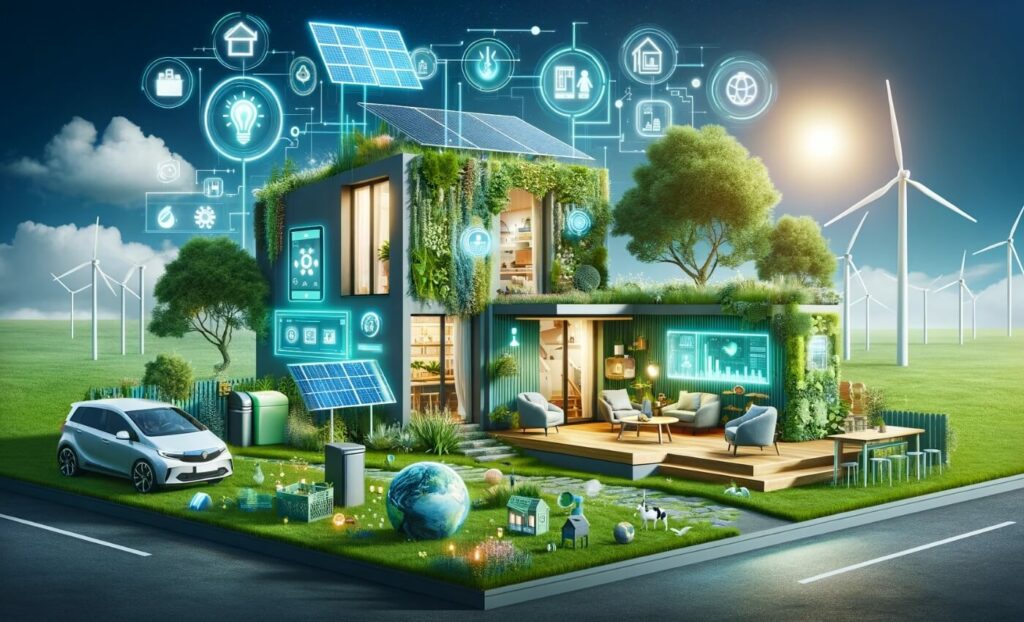
Creating an eco-friendly home doesn’t have to be a daunting task. Many simple yet effective solutions can make a big difference in reducing your carbon footprint and creating a sustainable living space.
One of the easiest ways to go green at home is by investing in energy-efficient appliances. Opt for appliances with high Energy Star ratings, which not only consume less electricity but also help you save on your energy bills. Additionally, consider installing smart thermostats that automatically adjust the temperature based on occupancy or weather conditions.
Another eco-friendly home solution is to reduce water consumption. Install low-flow showerheads and faucets to minimize water wastage while still enjoying a refreshing shower or doing daily chores. Fixing leaky pipes promptly and collecting rainwater for watering plants are other great ways to conserve this precious resource.
When it comes to lighting, switch from traditional incandescent bulbs to LED lights. LEDs use significantly less energy and last much longer than their counterparts, making them a cost-effective choice in the long run. You can also maximize natural light by strategically placing mirrors or using light-colored curtains.
To improve air quality inside your home, consider incorporating indoor plants that act as natural air purifiers. Plants such as peace lilies and snake plants not only add beauty but also filter out harmful toxins from the air we breathe.
In terms of insulation, ensure your home is properly sealed and insulated against drafts and leaks. This will not only keep your house comfortable throughout the year but also reduce heating and cooling costs.
Recycling should be an integral part of every eco-friendly household routine. Set up designated recycling bins for different materials like paper, plastic, glass, and metal – it’s amazing how much waste can be diverted from landfills through proper sorting!
By implementing these simple yet effective eco-friendly solutions into our homes today, we are paving the way towards a more sustainable future for generations to come. So, let’s make our homes a reflection of our commitment
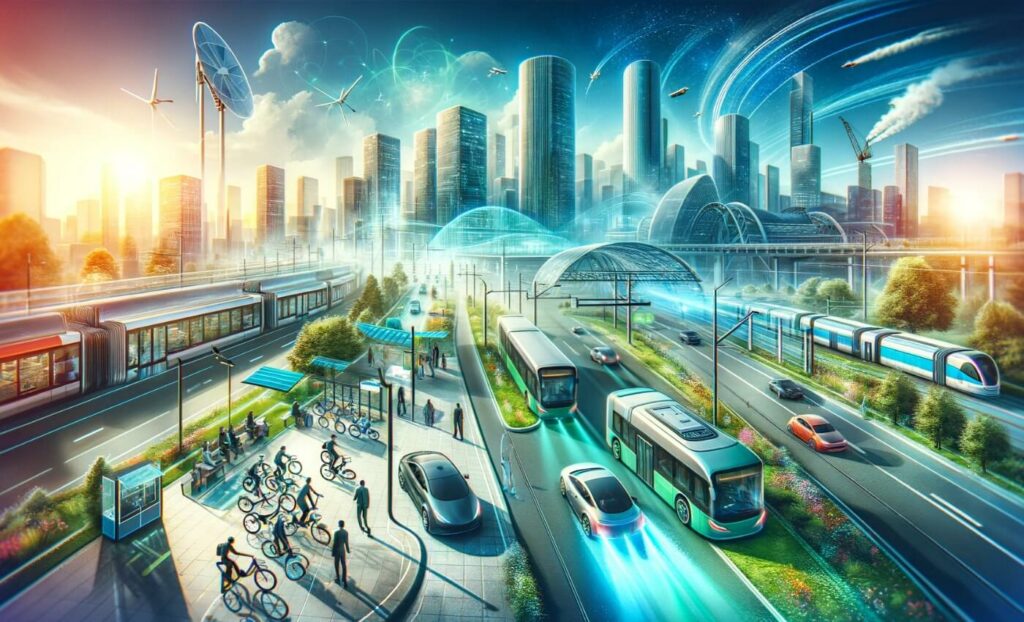
As we continue to prioritize sustainability and eco-friendly living, transportation plays a crucial role in reducing our carbon footprint. In 2024, several exciting developments can help us adopt greener modes of transportation.
One of the most promising advancements is the widespread adoption of electric vehicles (EVs). With advances in technology and infrastructure, EVs have become more accessible and affordable than ever before. They offer zero emissions, contributing significantly to cleaner air quality and reduced greenhouse gas emissions.
In addition to EVs, public transportation systems have also evolved to be more environmentally friendly. Many cities now boast efficient bus networks powered by renewable energy sources or hybrid technologies. These initiatives not only reduce individual car usage but also promote community bonding through shared experiences on public transport.
Cycling and walking have gained popularity as sustainable modes of transportation too. Cities around the world have invested in creating dedicated bike lanes and pedestrian-friendly infrastructure to encourage active commuting options. This shift not only helps reduce traffic congestion but also improves overall health and well-being.
Furthermore, innovative ride-sharing platforms focused on electric vehicle fleets are becoming increasingly prevalent. These services offer convenient alternatives for those who prefer not to own a car while still being able to access clean transportation options at their convenience.
Policymakers are implementing regulations that incentivize green travel choices such as lower toll fees for electric vehicles or priority parking spaces for bikes. By encouraging these sustainable behaviors through policy changes, governments play an essential role in driving forward the transition towards greener transportation methods.

When it comes to adopting an eco-friendly lifestyle, our diet and food choices play a significant role. In 2024, sustainable eating has become more popular than ever as people recognize the impact of their food consumption on the environment.
One way to make sustainable choices is by opting for locally sourced and organic produce. By supporting local farmers, we reduce transportation emissions while enjoying fresh, nutrient-rich foods. Additionally, choosing organic options helps minimize pesticide use that can harm both our health and the planet.
Another aspect of sustainable eating is reducing our meat consumption. Livestock farming contributes significantly to greenhouse gas emissions and deforestation. Embracing plant-based or flexitarian diets can have a positive impact on climate change while promoting better animal welfare.
Food waste is another area where we can make a difference. In 2024, there has been a growing emphasis on reducing food waste through composting and mindful meal planning. By utilizing leftovers creatively or donating excess food to those in need, we contribute to minimizing landfill waste.
Incorporating more whole foods into our diets not only benefits the environment but also promotes personal well-being. Processed foods often come with excessive packaging that ends up in landfills or oceans. Opting for fresh fruits, vegetables, grains, and legumes not only reduces packaging waste but also provides essential nutrients for optimal health.
Being conscious of the carbon footprint associated with certain types of seafood is crucial when making sustainable seafood choices in 2024. Overfishing leads to depleted fish stocks and disrupts marine ecosystems. Choosing sustainably harvested seafood ensures a healthier ocean ecosystem for future generations.
By making small changes in our diet and food choices today, we can create a big impact on sustainability in 2024 and beyond!

In 2024, the fashion industry has undergone a remarkable transformation towards sustainability. More and more consumers are now opting for eco-friendly clothing and accessories that are not only stylish but also have a minimal environmental impact.
One of the key principles of eco-friendly fashion is reducing waste. This means embracing concepts like upcycling, where old garments or materials are repurposed to create new pieces. Designers are getting creative with their designs by incorporating recycled fabrics, such as organic cotton or hemp, into their collections.
Another important aspect of sustainable fashion is ethical production practices. Consumers today expect transparency from brands regarding their supply chains and labor conditions. Many companies have responded by adopting fair trade certifications and ensuring safe working conditions for their employees.
The concept of “slow fashion” has gained popularity in recent years as an alternative to fast fashion’s disposable mentality. Slow fashion promotes quality over quantity by encouraging consumers to invest in well-made garments that will last longer.
When it comes to consumer goods beyond clothing, there has been a shift towards reusable alternatives. Single-use items like plastic water bottles or coffee cups have been replaced with durable options like stainless steel bottles or travel mugs.
Consumers are also becoming conscious of the materials used in everyday products. For example, bamboo toothbrushes and biodegradable cleaning supplies have become popular choices due to their low environmental impact.
The future of eco-friendly fashion and consumer goods looks promising as more people recognize the importance of making responsible choices that align with our planet’s well-being. By supporting brands that prioritize sustainability and choosing products mindfully, we can all contribute to building a greener future together!
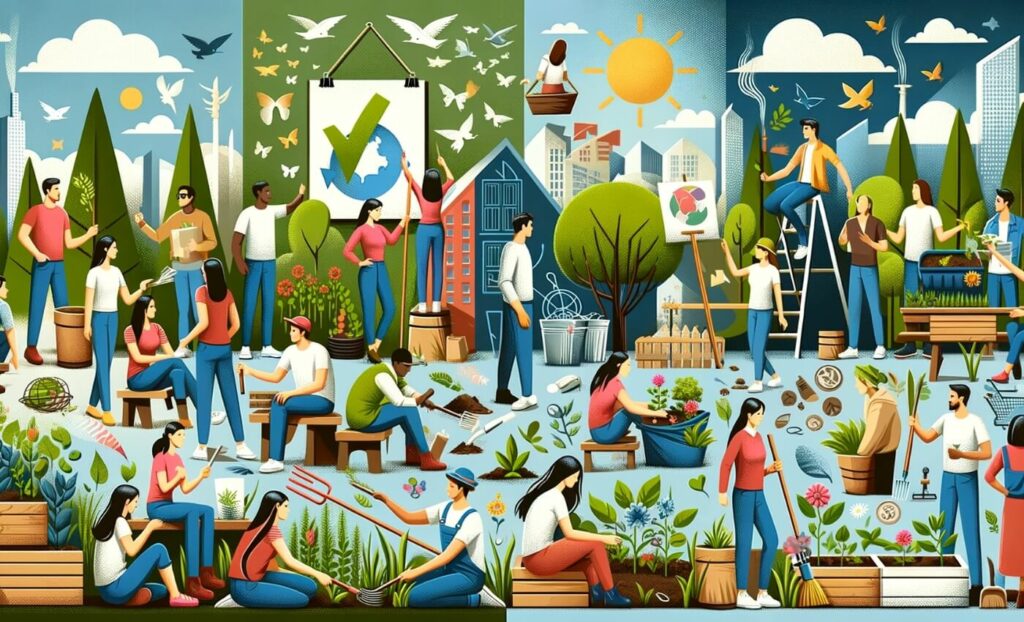
Getting involved in your local community and advocating for eco-friendly initiatives is a powerful way to make a difference. By joining forces with like-minded individuals, you can create real change and inspire others to do the same.
One of the best ways to get started is by volunteering for local environmental organizations or participating in community clean-up events. These hands-on activities not only help improve the environment but also foster a sense of camaraderie among participants.
Another impactful way to advocate for sustainability is by attending city council meetings or organizing grassroots campaigns. By voicing your concerns about issues such as renewable energy, waste reduction, or green transportation, you can influence policy decisions and encourage lawmakers to prioritize eco-friendly solutions.
Engaging with your community through social media platforms or creating online forums allows you to connect with people who share similar values. It’s an opportunity to exchange ideas, share resources, and support each other’s efforts towards sustainable living.
Furthermore, consider supporting local businesses that prioritize environmentally friendly practices. By choosing products from companies committed to sustainability, you are helping drive demand for greener options while boosting the local economy.
Remember that collective action has tremendous power. By building partnerships within your community and beyond, you can amplify your impact and be part of a global movement towards a more sustainable future.
Embracing an eco-friendly lifestyle involves making conscious choices every day that prioritize sustainability over convenience. Whether it’s through small changes at home or active engagement within your community, every action counts when it comes to protecting our environment for future generations.
![]()